If your Fittonia leaves are curling, it could be caused by one of several different things. In this article, we’ll discuss 11 possible causes of Fittonia leaves curling and how to fix them. Some of the causes are environmental, such as too much sun or too little water. Others are due to pests or disease. And still others are the result of cultural practices, such as pruning or fertilizing. By correctly identifying the cause of the problem, you can take the appropriate steps to fix it and get your Fittonia leaves looking healthy again.
Causes of Fittonia Leaves Curling
Fittonia leaves curling can be caused by a variety of factors, including temperature stress, nutrient deficiency, pests, and disease.
If the temperature is too hot or too cold, the leaves will curl. Temperature stress is a common cause of fittonia leaves curling. The ideal temperature for fittonia is between 65-75 degrees Fahrenheit.
Nutrient deficiency can also cause fittonia leaves to curl. If the plant is not getting enough nitrogen, phosphorus, or potassium, the leaves will start to curl.
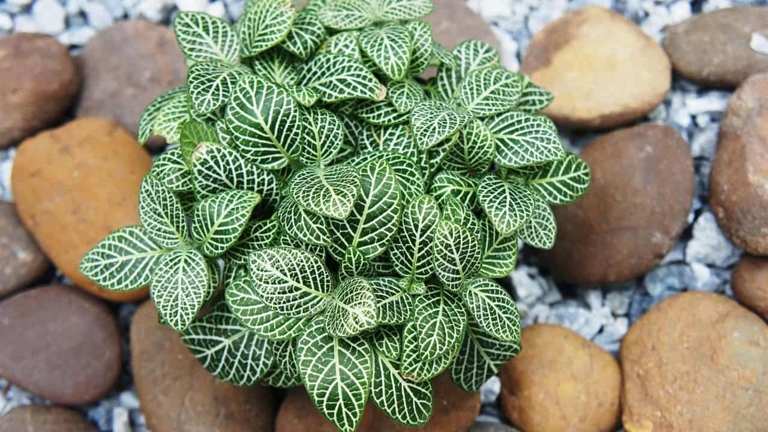
Pests can also cause fittonia leaves to curl. Aphids, mealybugs, and spider mites are all common pests that can attack fittonia plants.
Disease can also cause fittonia leaves to curl. Common diseases that affect fittonia include root rot and powdery mildew.
Underwatering
If you think your plant may be underwatering, check the soil to see if it is dry to the touch. This means that the plant is not getting enough water and the leaves are beginning to dry out and curl as a result. One of the most common reasons for fittonia leaves curling is underwatering. If it is, water your plant thoroughly and make sure to water it more frequently in the future.
How to Fix
Here are 11 possible causes of fittonia leaves curling and how to fix them: If you notice your fittonia leaves curling, it could be due to one of several reasons.
Too much sun: If your fittonia is getting too much sun, the leaves will start to curl. Move the plant to a shadier spot and see if that helps. 1.
Too little sun: If your fittonia is getting too little sun, the leaves will also start to curl. Move the plant to a sunnier spot and see if that helps. 2.
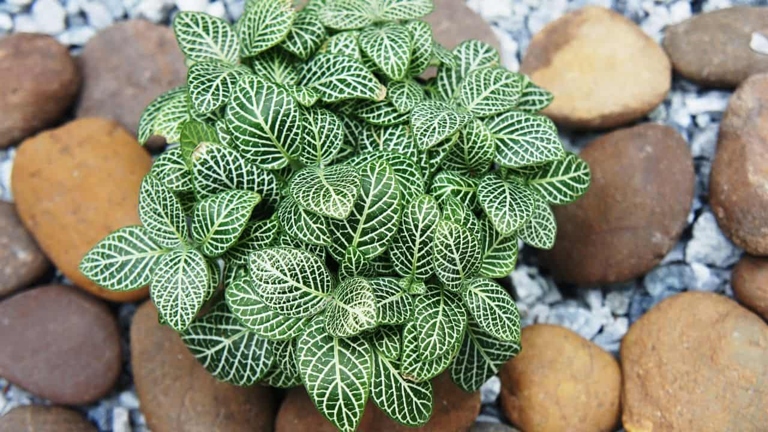
Too much water: If you’re watering your fittonia too often, the leaves will start to curl. 3. Cut back on watering and see if that helps.
4. Water more frequently and see if that helps. Too little water: If you’re not watering your fittonia enough, the leaves will also start to curl.
Repot the plant in a different type of soil and see if that helps. Incorrect soil: If your fittonia is in soil that’s too heavy or too light, the leaves will start to curl. 5.
Repot the plant in a pot with better drainage and see if that helps. This will cause the leaves to curl. 6. Poor drainage: If your fittonia’s pot doesn’t have good drainage, the roots can start to rot.
Temperature stress: If the temperature is too hot or too cold, the leaves will start to curl. 7. Move the plant to a different location with a more moderate temperature and see if that helps.
Pest infestation: If your fittonia has pests, such as aphids or mealybugs, the leaves will start to curl. Treat the plant with an appropriate pesticide and see if that helps. 8.
Nutrient deficiency: If your fittonia is lacking nutrients, such as nitrogen, the leaves will start to curl. 9. Fertilize the plant and see if that helps.
Disease: If your fittonia has a disease, such as powdery mildew, the leaves will start to curl. Treat the plant with an appropriate fungicide and see if that helps. 10.
Try to correct the environmental stressor and see if that helps. Environmental stress: If the plant is under stress from its environment, such as too much or too little light, the leaves will start to curl. 11.
Overfeeding Fittonia with Fertilizer
Overfeeding can lead to leaf curling, as well as other issues like leaf scorching and stunted growth. If you’re noticing that the leaves on your fittonia are curling, it could be a sign that you’re overfeeding the plant with fertilizer. Fertilizer is essential for healthy growth, but too much of it can cause problems.
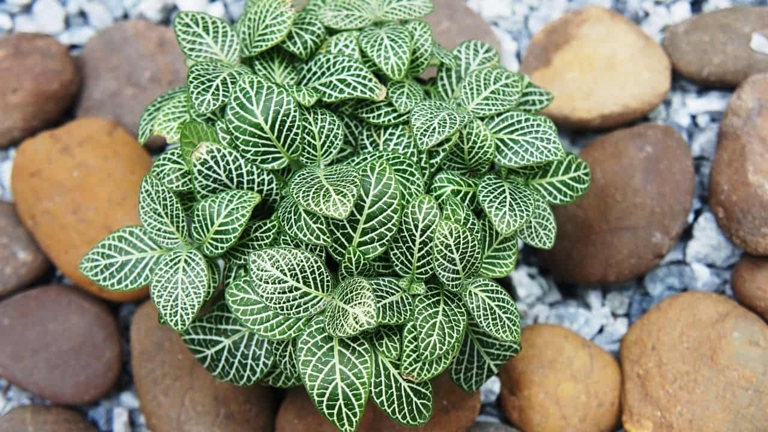
If you think you might be overfeeding your fittonia, the first step is to cut back on the amount of fertilizer you’re using. Once you’ve corrected the problem, your fittonia should start to look healthier and its leaves should uncurl. If the problem persists, you may need to flush the soil to remove any excess fertilizer.
How to Fix?
Luckily, there are a few things you can do to fix the problem. Fittonia leaves can curl for a variety of reasons, including too much or too little water, too much or too little light, or even pests.
If the leaves are curling due to too little water, on the other hand, you’ll need to water your plant more frequently. If your Fittonia’s leaves are curling due to too much water, the best solution is to simply let the plant dry out a bit.
If the leaves are curling due to too little light, you may need to move your plant to a sunnier spot. If the leaves are curling due to too much light, you may need to move your plant to a shadier spot.
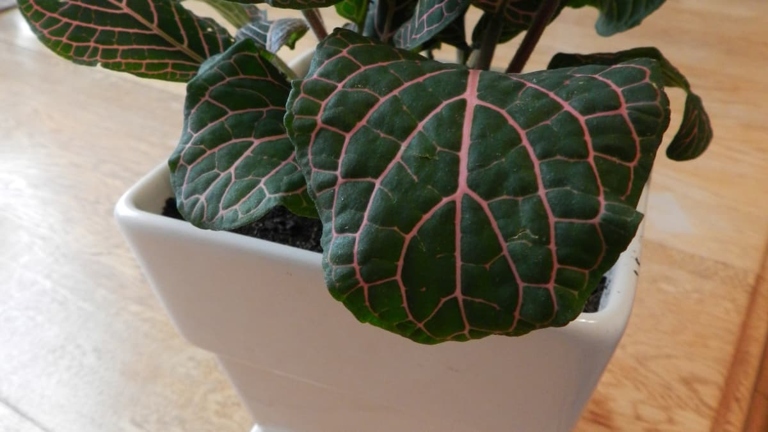
Finally, if pests are to blame for the curling leaves, you’ll need to treat your plant with an insecticide.
Lack of Nutrition
Lack of nutrition is often the cause of fittonia leaves curling. This can be due to several reasons, such as not enough nutrients in the soil, not enough sunlight, or too much water. To fix this, you will need to fertilize the soil, provide more light, or reduce the amount of water.
How to Fix?
If your fittonia’s leaves are curling, it’s likely due to one of these 11 causes. Fortunately, most of them are easy to fix.
1. Too Much Sun
Move it to a shadier spot and see if that helps. Fittonias prefer indirect sunlight, so if your plant is getting too much sun, its leaves will start to curl.
Not Enough Sun 2.
If your plant isn’t getting enough sun, its leaves will also start to curl. Move it to a brighter spot and see if that makes a difference.
3. Incorrect Watering
Fittonias are sensitive to both over- and under-watering. Water your plant when the top inch of soil is dry, and make sure the pot has drainage holes so the roots don’t get waterlogged.
4. Poor Drainage
If the pot doesn’t have drainage holes, or if the holes are blocked, the roots can’t get the air they need and the plant will start to suffer. Repot the plant in a pot with drainage holes and see if that helps.
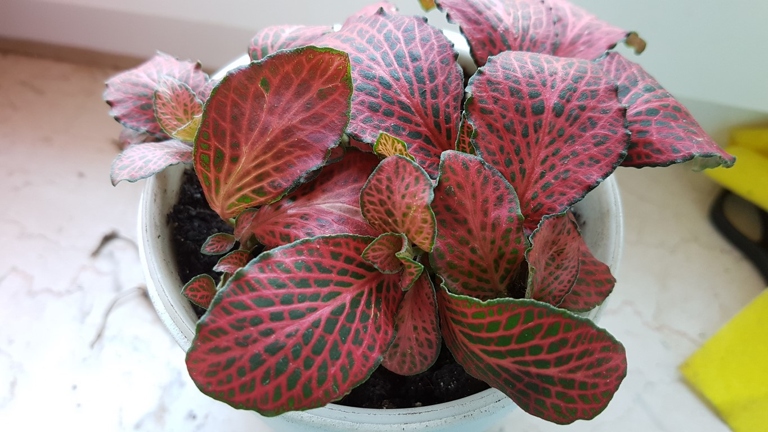
Too Much Fertilizer 5.
Fertilizing too often or using too much fertilizer can burn the roots and damage the plant. Cut back on fertilizer and see if the leaves start to uncurl.
Pests 6.
If your plant is infested with pests, they may be feeding on the leaves and causing them to curl. Treat the plant with an insecticide and see if that helps.
Disease 7.
If you suspect your plant is sick, take it to a nursery or garden center for diagnosis and treatment. Certain diseases can cause the leaves of fittonias to curl.
Temperature Stress 8.
Move the plant to a warmer, more humid spot and see if that helps. Fittonias prefer warm, humid conditions, so if the temperature drops too low or the air is too dry, the leaves may start to curl.
Transplant Shock 9.
This is normal and the plant will usually recover within a few weeks. Just make sure to keep it watered and out of direct sunlight until it recovers. When you transplant a fittonia, it may go into shock and its leaves will start to curl.
10. Drying Out
If the leaves of your fittonia start to curl and turn brown, it means the plant is drying out. Water it thoroughly and make sure the pot has drainage holes so the roots don’t get waterlogged.
Root Rot 11.
If the roots of your plant are rotting, it will start to show signs of stress, like curling leaves. Cut away any rotten roots and repot the plant in fresh, sterile potting mix.
Depleted soil
To fix this, you need to fertilize the soil with a high-quality fertilizer that has a high concentration of nitrogen. You can also add organic matter to the soil to help improve its quality. Depleted soil is one of the leading causes of fittonia leaves curling. This is because the plant isn’t able to get the nutrients it needs from the soil, causing the leaves to curl up and eventually die.
Impaired soil pH
If you notice that the leaves of your fittonia are curling, it could be a sign that the soil pH is impaired. The ideal pH range for fittonia is 6.0-7.0, so if the soil is too acidic or too alkaline, it can cause problems for the plant. If you suspect that the soil pH is the issue, you can test it with a soil test kit and then adjust the pH accordingly.
Temperature Stress
Temperature Stress
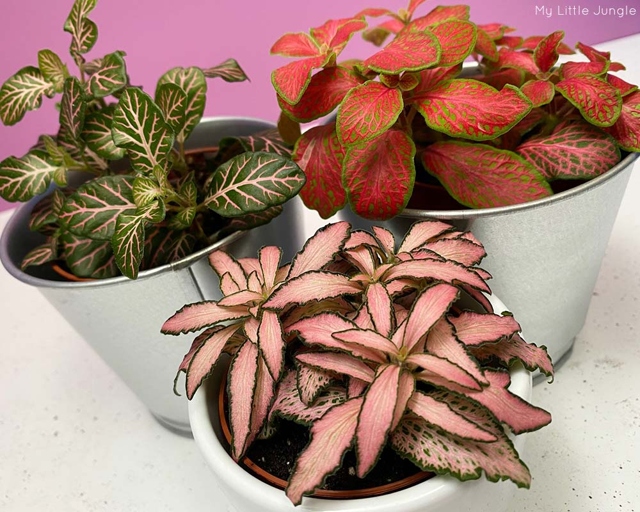
This is because the leaves are sensitive to temperature changes and will react accordingly. If the temperature in your home or office is too hot or too cold, your Fittonia leaves may start to curl. If you notice that the leaves are curling, try to adjust the temperature and see if that fixes the problem. If not, there may be another issue at play.
How to Fix?
Fittonia leaves curling is a common problem that can be caused by a number of different things. Here are 11 possible causes of fittonia leaves curling and how to fix them:
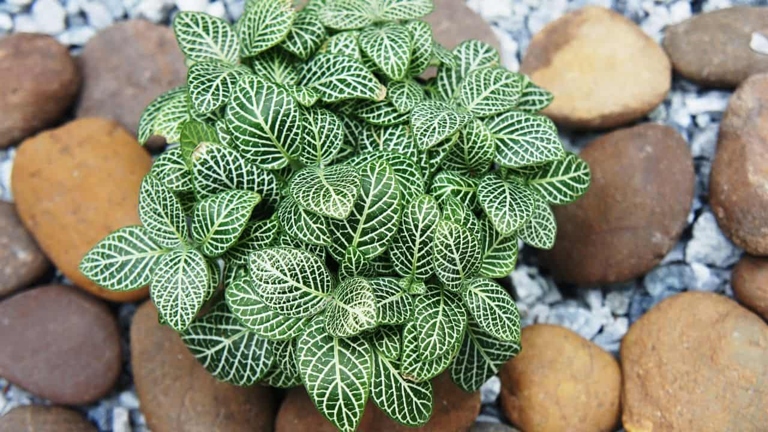
To fix this, water your plant less often. 1. Too much water: If your fittonia is getting too much water, the leaves will start to curl.
Not enough water: If your fittonia is not getting enough water, the leaves will also start to curl. To fix this, water your plant more often. 2.
To fix this, move your plant to a location that has a more moderate temperature. 3. Temperature: If the temperature is too hot or too cold, the leaves of your fittonia will start to curl.
To fix this, water your plant more often or loosen the soil around the roots. Soil: If the soil is too dry or too compacted, the leaves of your fittonia will start to curl. 4.
Light: If your plant is not getting enough light, the leaves will start to curl. To fix this, move your plant to a location that gets more light. 5.
6. Pests: If your plant is infested with pests, the leaves will start to curl. To fix this, treat your plant with an insecticide.
Disease: If your plant is suffering from a disease, the leaves will start to curl. 7. To fix this, consult with a plant expert to diagnose the problem and treat the plant accordingly.
Nutrient Deficiency: If your plant is not getting enough nutrients, the leaves will start to curl. To fix this, fertilize your plant. 8.
To fix this, stop pruning your plant or prune it less often. Pruning: If you prune your plant too much, the leaves will start to curl. 9.
Transplanting: If you transplant your plant too often, the leaves will start to curl. 10. To fix this, transplant your plant less often.
Genetics: Sometimes, a plant will simply inherit the tendency to curl its leaves from its parents. There is no fix for this other than to accept it and enjoy your plant nonetheless. 11.
Root Rot from Overwatering
The first step is to stop watering the plant and allow the soil to dry out. This can lead to the leaves of the plant curling and eventually dying. Once the soil is dry, you can then replant the plant in fresh, well-draining soil. The roots of the plant become waterlogged and can no longer function properly. If you think your plant may have root rot, it is important to take action immediately. Root rot is a common problem for plants that are overwatered.
How to Fix?
If your Fittonia leaves are curling, it could be due to any of the following 11 reasons:
Too much sun 1.
If you think this might be the problem, try moving your plant to a shadier spot. Fittonia are native to the shady rainforests of South America, so too much sun can cause their leaves to curl.
Too little sun 2.
If your plant is in a very dark spot, try moving it to a spot that gets more light. On the other hand, too little sun can also cause Fittonia leaves to curl.
3. Overwatering
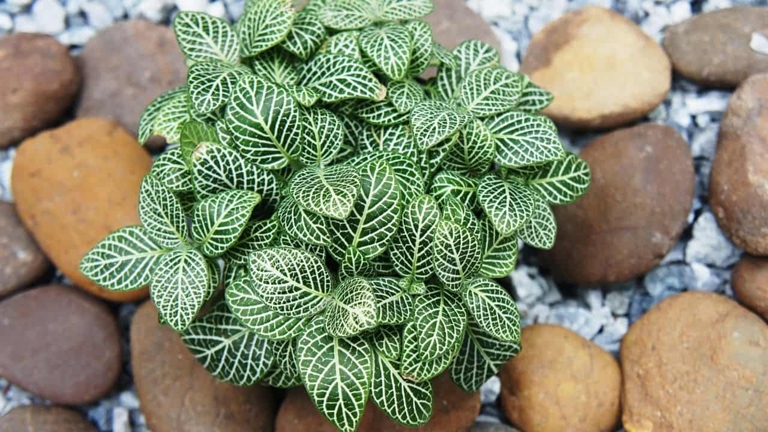
If you think this might be the problem, try letting the soil dry out more between waterings. Fittonia are sensitive to overwatering, and their leaves will start to curl if they’re getting too much water.
4. Underwatering
Underwatering can also cause Fittonia leaves to curl. If you think this might be the problem, try watering your plant more often.
Temperature stress 5.
Fittonia are sensitive to both high and low temperatures, and their leaves will curl if they’re exposed to either extreme. If you think this might be the problem, try to keep your plant in a temperature range of 65-75 degrees Fahrenheit.
6. Nutrient deficiencies
Fittonia are particularly sensitive to magnesium deficiencies, and their leaves will start to curl if they’re not getting enough of this nutrient. If you think this might be the problem, try fertilizing your plant with a magnesium-rich fertilizer.
Pest infestation 7.
Fittonia are susceptible to a variety of pests, including aphids, mealybugs, and spider mites. If you see any of these pests on your plant, try to remove them with a cotton swab dipped in rubbing alcohol.
Disease 8.
Fittonia are also susceptible to a variety of diseases, including root rot and leaf spot. If you think your plant might be diseased, try to treat it with a fungicide or bactericide.
Poor drainage 9.
If your plant is in a pot with poor drainage, try repotting it into a pot with better drainage. Fittonia need well-drained soil in order to thrive.
Rootbound 10.
If your Fittonia is rootbound, its roots will start to curl. If you think this might be the problem, try repotting your plant into a larger pot.
Soil compaction 11.
Fittonia need loose, well-aerated soil in order to thrive. If your plant’s soil is compacted, try aerating it with a fork or by adding some sand.
Water Quality
If your water is too hard or too soft, it can cause problems for your plants. If you suspect that your water quality is causing problems for your plants, you can have it tested by a professional. Soft water can cause leaf drop and other problems. Hard water can cause mineral buildup on leaves, which can lead to curling. Water quality is one of the most important factors in plant health.
How to Fix?
Fittonia leaves curling is a common problem that can be caused by a number of different factors. Luckily, there are a few simple steps you can take to fix the problem.
If your plant is not getting enough water, the leaves will start to curl in an effort to conserve moisture. One of the most common causes of curling leaves is insufficient watering. The best way to fix this problem is to water your plant more frequently.
Another common cause of curling leaves is too much sunlight. The best way to fix this problem is to move your plant to a location that gets less direct sunlight. If your plant is getting too much direct sunlight, the leaves will start to curl in an effort to protect themselves from the harsh rays.
Choose a fertilizer that is high in nitrogen and phosphorus, and follow the instructions on the package. If the leaves on your plant are curling due to a nutrient deficiency, you can try fertilizing your plant.

If you can’t figure out what is causing the leaves on your plant to curl, you can try one of the many products available that are designed to fix curling leaves. These products usually contain a combination of nutrients and chemicals that will help to correct the problem.
Too Much or Too Little Light Exposure
If your plant is receiving too much light, the leaves will curl up to protect themselves from the intense light. If your plant is not receiving enough light, the leaves will also curl up in an attempt to get more light. Fittonia leaves curling can be caused by too much or too little light exposure.
How to Fix?
Fittonia leaves curling is a common problem that can be caused by a number of different things. Here are 11 possible causes of fittonia leaves curling and how to fix them:
The ideal temperature for fittonias is between 65-75 degrees Fahrenheit. 1. Temperature stress: If the temperature is too hot or too cold, it can cause the leaves of your fittonia to curl.
Try misting your plant daily or setting it on a pebble tray filled with water. Humidity: Fittonias prefer a humid environment, so if the air is too dry, it can cause the leaves to curl. 2.
If the soil is too heavy or too alkaline, it can cause the leaves to curl. 3. Soil: Fittonias prefer a well-draining, slightly acidic soil.
4. Water your plant when the top inch of soil is dry and be sure to empty any water that collects in the saucer beneath the pot. Watering: Over or under watering can both cause the leaves of your fittonia to curl.
Fertilizer: Too much or too little fertilizer can cause the leaves of your fittonia to curl. Fertilize your plant every two weeks with a half-strength solution of liquid fertilizer. 5.
If the plant is getting too much or too little light, it can cause the leaves to curl. 6. Light: Fittonias prefer bright, indirect light.
Pests: Aphids, mealybugs, and spider mites are all common pests that can attack fittonias and cause the leaves to curl. 7. Be sure to inspect your plant regularly and treat it with an appropriate insecticide if necessary.
Disease: Fittonias are susceptible to a number of diseases, including root rot and powdery mildew. If you think your plant is sick, be sure to take it to a professional for diagnosis and treatment. 8.
Pruning: Fittonias can be sensitive to pruning, so if you trim the leaves or stems too aggressively, it can cause the plant to curl. If you need to prune your plant, do so carefully and only remove the affected leaves or stems. 9.
Repotting: Fittonias don’t like to be disturbed, so if you repot them too often, it can cause the leaves to curl. 10. Only repot your plant when it is absolutely necessary and be sure to use a well-draining potting mix.
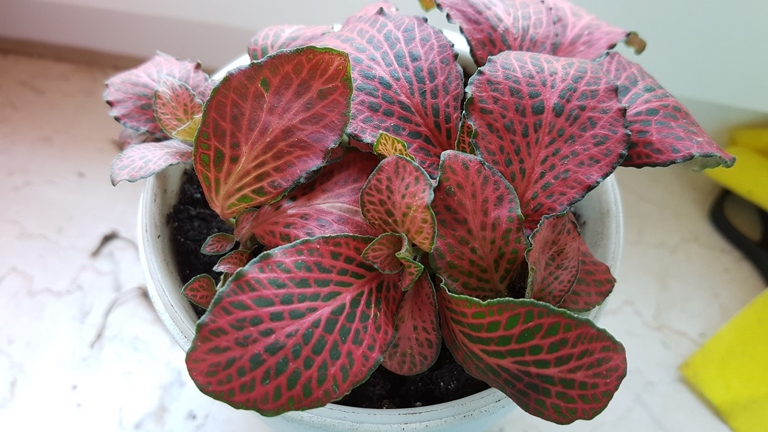
Stress: Like all plants, fittonias can be susceptible to stress. If your plant is experiencing too much stress, it can cause the leaves to curl. Be sure to give your plant the proper care and attention it needs to stay healthy and happy. 11.
Insect Infestation
If your fittonia leaves are curling, it could be due to an insect infestation. There are a few different insects that can cause this problem, including aphids, whiteflies, and mealybugs.
Aphids are small, pear-shaped insects that feed on plant sap. They can cause leaves to turn yellow and curl up. Whiteflies are small, white insects that also feed on plant sap. Mealybugs are small, fuzzy insects that feed on plant juice. They can cause leaves to curl and distort as they feed. They can cause leaves to curl and turn yellow.
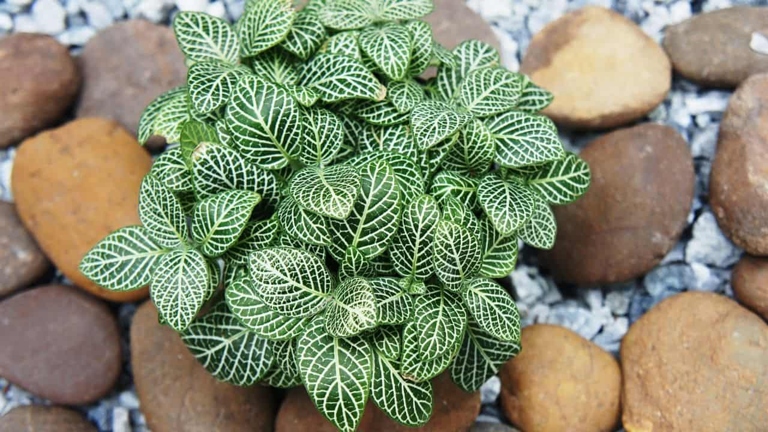
Look for small, crawling insects on the leaves and stems. If you think your plant has an insect infestation, you should inspect it carefully. If you find any, you can try to remove them by hand or with a cotton swab dipped in rubbing alcohol. Be sure to follow the directions on the label carefully. You can also try spraying the plant with an insecticide.
How to Fix?
Fittonia leaves curling is a common problem that can be caused by a number of different factors. Luckily, there are a few simple steps you can take to fix the problem.
If your plant is getting too much water, the leaves will start to curl up. To fix this, simply reduce the amount of water you’re giving your plant. One of the most common causes of fittonia leaves curling is too much water.
If your plant is getting too much sun, the leaves will start to curl up. Another common cause of fittonia leaves curling is too much sun. To fix this, simply move your plant to a spot that gets less sun.

To fix this, simply move your plant to a warmer spot. Finally, fittonia leaves can also curl up if the temperature is too cold. If your plant is in a spot that is too cold, the leaves will start to curl up.
If you follow these simple steps, you should be able to fix the problem of fittonia leaves curling.
Low Humidity
If the air in your home is dry, it can cause the leaves to curl. If you notice that the leaves on your fittonia are curling, it could be a sign that the humidity is too low. Fittonias are native to tropical rainforests, so they need high humidity to thrive.
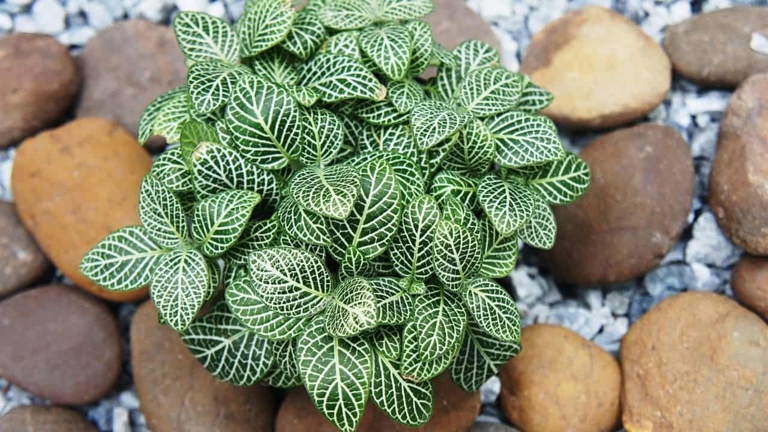
There are a few things you can do to increase the humidity around your fittonia. First, try misting the leaves with water a few times a day. Finally, make sure you’re not placing the fittonia too close to a heater or air conditioner, as this can dry out the air. You can also put the pot on a tray of pebbles and water. The water will evaporate and increase the humidity around the plant.
How to Fix?
If you notice your fittonia leaves curling, it could be due to any of the following 11 causes. But don’t worry, there are ways to fix each issue.
1. Too Much Sunlight
If your plant is getting too much sunlight, the leaves will curl to prevent themselves from getting sunburned. Move your plant to a shadier spot and see if the leaves uncurl.
Too Much Water 2.
Allow the soil to dry out completely between waterings. If you’re watering your plant too often, the leaves will start to curl.
Not Enough Water 3.
Make sure to water your plant regularly and keep the soil moist. If the soil is too dry, the leaves will also start to curl.
4. Temperature Fluctuations
Keep your plant in a spot that has consistent temperatures. If the temperature fluctuates too much, it can cause the leaves to curl.
Nutrient Deficiencies 5.
If the leaves are curling due to nutrient deficiencies, you can try fertilizing your plant.
Pests 6.
If pests are the cause of the curling leaves, you’ll need to treat your plant with an insecticide.
Disease 7.
If the leaves are curling due to a disease, you’ll need to treat your plant with a fungicide.
Poor drainage 8.
If the soil doesn’t drain well, the roots can start to rot. Make sure to plant your fittonia in a pot with good drainage. This will cause the leaves to curl.
Too much fertilizer 9.
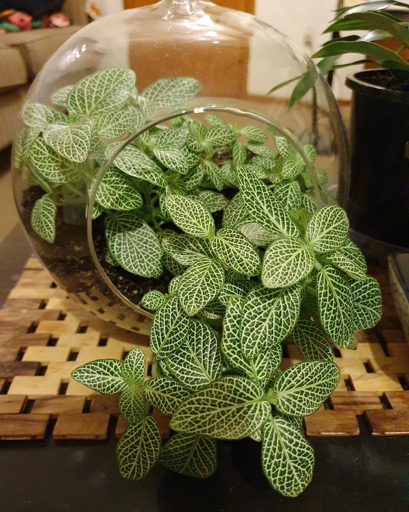
If you’re fertilizing your plant too often, the leaves will start to curl. Cut back on the fertilizer and see if the leaves uncurl.
Repotting 10.
If you’ve recently repotted your plant, the leaves may curl due to transplant shock. Give your plant some time to adjust to its new pot and see if the leaves uncurl.
Age 11.
This is normal and there’s no need to worry. As plants age, the leaves may start to curl.
Soil type
If you’re using a potting mix that’s too heavy on clay, it can cause the leaves to curl. The same is true if the mix is too sandy. The ideal potting mix for fittonia is one that’s well-drained and contains a mix of peat moss, perlite, and vermiculite. One possibility is the type of soil you’re using. There are many reasons why your fittonia leaves may be curling.
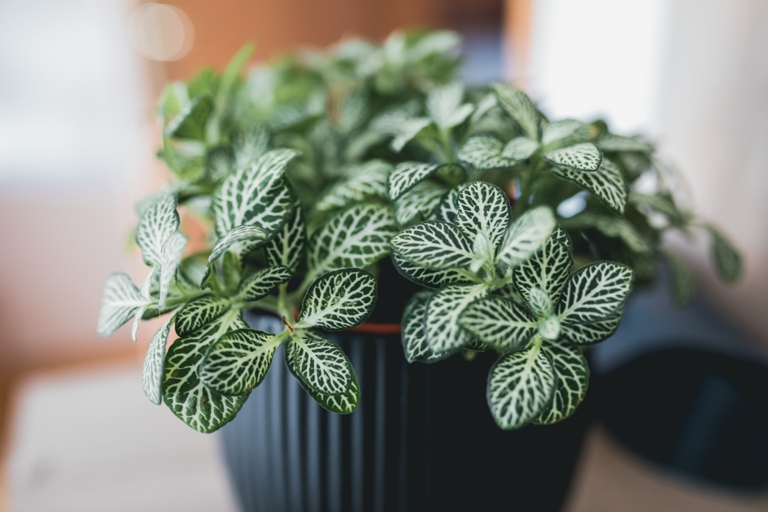
If you’re not sure about the composition of your potting mix, you can always do a simple test by taking a small sample of soil and adding water to it. The perfect mix will form a crumbly mixture that holds together when you squeeze it, but breaks apart easily when you let go. If the soil forms a clump, it’s too clay-heavy. If it forms a soupy mixture, it’s too sandy.
How to Fix?
Fittonia leaves curling is a common problem that can be caused by a number of different factors. Here are 11 possible causes of fittonia leaves curling, and how to fix them.
To fix this, water your plant less often. Too much water. 1. If your fittonia is getting too much water, the leaves will start to curl.
Not enough water. Make sure you’re watering your plant regularly. If your plant isn’t getting enough water, the leaves will also start to curl. 2.

Keep your plant in a consistent temperature. 3. Temperature changes. If the temperature fluctuates too much, it can cause the leaves to curl.
Soil changes. If you change the type of soil your plant is in, it can cause the leaves to curl. 4. To fix this, try to keep the soil consistent.
To fix this, try to keep the light consistent. Light changes. If you move your plant to a different location, it can cause the leaves to curl. 5.
To fix this, fertilize your plant regularly. Nutrient deficiency. 6. If your plant isn’t getting enough nutrients, the leaves will start to curl.
To get rid of pests, use a pesticide. If your plant has pests, they can cause the leaves to curl. 7. Pests.
To treat a disease, use a fungicide. Disease. If your plant has a disease, it can cause the leaves to curl. 8.
If you’re fertilizing your plant too much, it can cause the leaves to curl. To fix this, fertilize your plant less often. 9. Too much fertilizer.
To fix this, improve the drainage in your plant’s pot. If your plant has poor drainage, the roots can’t get enough oxygen and the leaves will start to curl. 10. Poor drainage.
Root rot. To fix this, remove the affected roots and replant in fresh soil. 11. If your plant has root rot, the leaves will start to curl.
Pot size
The plant may be rootbound, which means the roots have filled up the pot and need more space. If you notice your Fittonia leaves curling, it’s important to take a close look at the pot size.
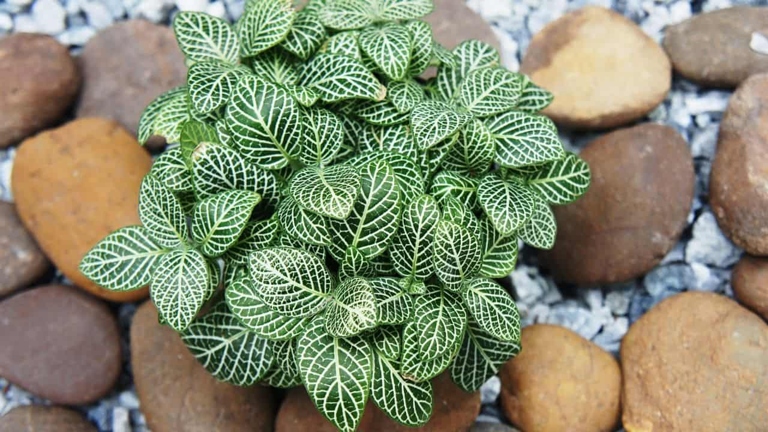
If the pot is too small, the roots can’t get the water and nutrients they need, which can cause the leaves to curl. The solution is to transplant the Fittonia into a larger pot.
When transplanting, be sure to loosen the roots and add fresh potting mix. Water the plant well and place it in a bright, indirect light. With a little TLC, your Fittonia should soon be back to its lush, green self.
How to Fix?
If you notice your fittonia leaves curling, it could be due to a number of reasons. Here are 11 possible causes and how to fix them.
Too Much Water 1.
The best way to fix this is to let the soil dry out completely between waterings. If you’re giving your plant too much water, the leaves will start to curl.
Not Enough Water 2.
Make sure you’re watering your plant regularly and giving it enough water each time. If your plant isn’t getting enough water, the leaves will also start to curl.
3. Temperature Stress
Make sure you’re keeping your plant in a comfortable temperature range. If the temperature is too hot or too cold, your plant will start to experience stress. This can cause the leaves to curl.
Nutrient Deficiency 4.
Make sure you’re fertilizing your plant regularly. If your plant isn’t getting enough nutrients, it will start to show signs of stress. This can include curling leaves.
5. Pest Infestation
This can cause the leaves to curl. If your plant is infested with pests, they will start to feed on the leaves. The best way to fix this is to treat your plant with an appropriate pesticide.
Disease 6.
The best way to fix this is to treat your plant with the appropriate fungicide or herbicide. If your plant is suffering from a disease, the leaves will start to curl.
7. Poor Air circulation
If your plant is not getting enough air circulation, the leaves will start to curl. The best way to fix this is to make sure your plant has plenty of space to breathe.
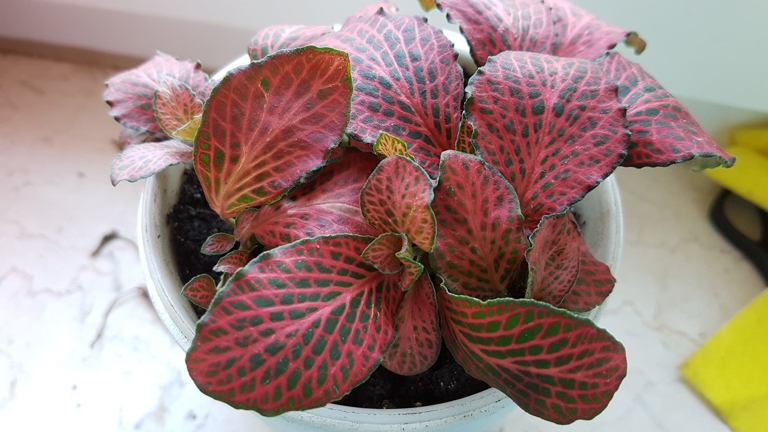
Too Much Sun 8.
The best way to fix this is to move your plant to a shadier spot. If your plant is getting too much sun, the leaves will start to curl.
Too Much Shade 9.
The best way to fix this is to move your plant to a sunnier spot. If your plant is getting too much shade, the leaves will also start to curl.
Soil Compaction 10.
If the soil around your plant is too compacted, the roots will not be able to get enough oxygen. This can cause the leaves to curl. The best way to fix this is to loosen the soil around your plant.
Transplant Shock 11.
If you’ve recently transplanted your plant, it will go through a period of shock. The best way to fix this is to give your plant time to adjust to its new environment. This can cause the leaves to curl.
Final Words
Here are some final words on the subject. Fittonia leaves curling is a common problem that can be caused by a variety of factors.
If you suspect that your Fittonia is suffering from leaves curling, the first step is to identify the cause. Once you know what is causing the problem, you can take steps to fix it.
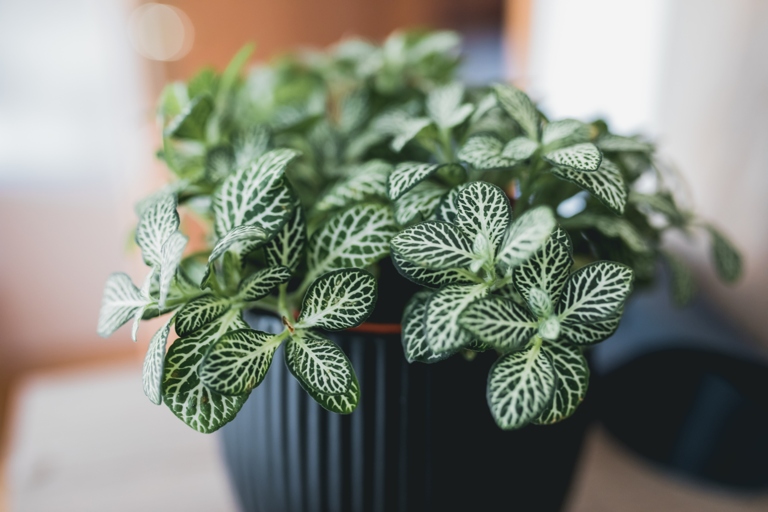
If the problem is due to overwatering, you will need to adjust your watering schedule. There are a variety of ways to fix leaves curling, depending on the cause. If the problem is due to pests, you will need to treat the plant with an appropriate pesticide.
If you are unsure of the cause of the problem, or if you cannot fix the problem, you may need to consult with a professional. A professional can help you diagnose the problem and find a solution.
Frequently Asked Questions
1. What are the 11 causes of Fittonia leaves curling?
2. Why do Fittonia leaves curl?
3. How can I fix Fittonia leaves that are curling?
4. What should I do if I see Fittonia leaves curling?
5. How can I prevent Fittonia leaves from curling?
Final thoughts
Fittonia leaves curling can be caused by a number of different factors, including temperature, humidity, light, water, and pests. By understanding the causes of fittonia leaves curling, you can take steps to prevent it from happening.
